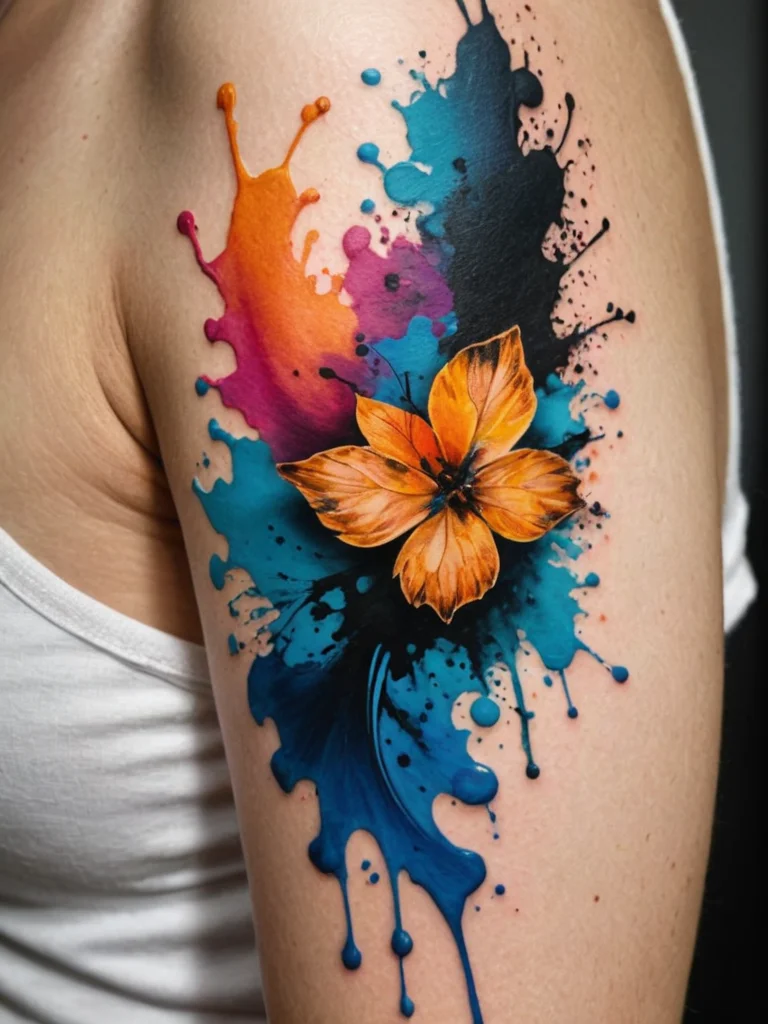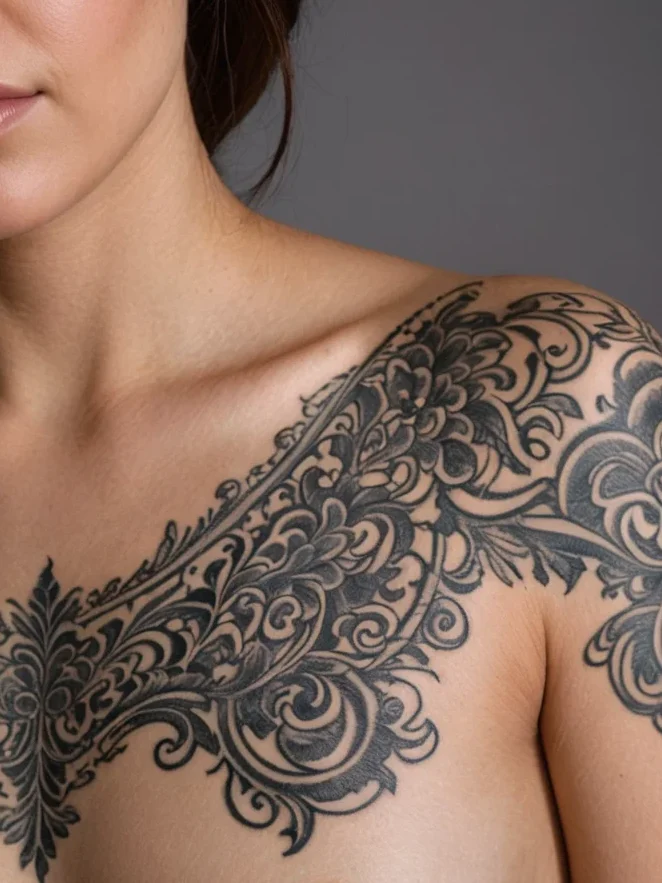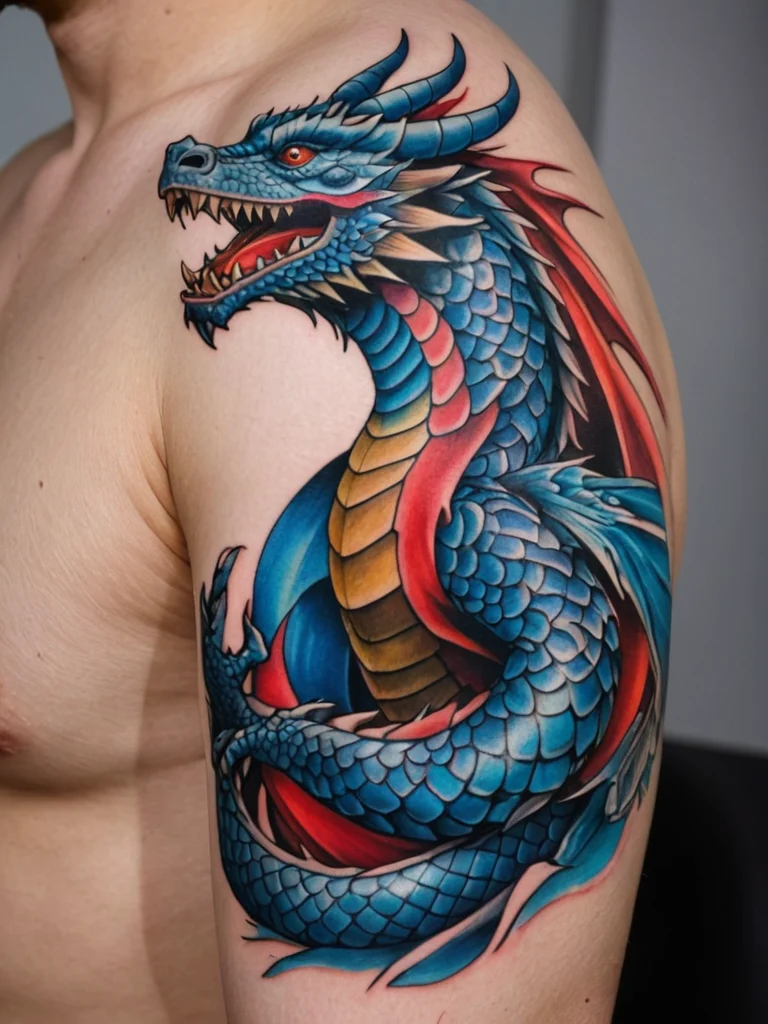Deciding on your next tattoo is an exciting journey, and one of the most fundamental choices you’ll make revolves around its aesthetic: will it be a classic black and grey piece, or a vibrant explosion of color? Both approaches offer unique artistic possibilities and evoke distinct emotions, making the decision deeply personal. Understanding the nuances, historical context, and artistic potential of each can guide you toward the perfect expression of your chosen design. At tattoovalue.net, we delve into the heart of this visual debate to help you navigate the spectrum and find the style that truly resonates with you.
The enduring appeal of black and grey: when less is more

Black and grey tattooing, often referred to as realism or traditional black and grey, boasts a rich history and a timeless elegance. This style primarily uses black ink, diluted with water or distilled spirits to create a gradient of shades, from the deepest black to the subtlest greys. The artistry lies in the meticulous application of these tones to build form, texture, and depth. Historically, black and grey tattooing gained significant traction in the prison system and later became a staple in Chicano culture, where it was used to create intricate portraits, religious iconography, and symbolic imagery with profound emotional weight. The mastery of this style requires exceptional control over the tattoo machine and a deep understanding of shading techniques, often referred to as ‘whip shading’ or ‘stippling,’ to achieve smooth transitions and lifelike details.
The beauty of black and grey lies in its versatility and sophistication. It can convey a wide range of emotions, from somber introspection to powerful realism. Think of the intricate details in a black and grey portrait, where subtle shifts in tone can capture the very essence of a person’s expression, the weariness in their eyes, or the texture of their skin. This style excels at rendering realism, creating portraits that seem to leap off the skin, or landscapes that draw you into their atmospheric depths. Furthermore, black and grey tattoos often age exceptionally well. As skin ages and changes, the subtle gradients and solid black lines tend to hold their integrity, often requiring less touch-up over the years compared to color tattoos, which can sometimes fade unevenly.
Many tattoo artists recommend black and grey for its inherent timelessness. It transcends fleeting trends and maintains its artistic impact across decades. The focus remains squarely on the subject matter and the artist’s skill in rendering it with depth and contrast. Whether you’re drawn to the starkness of a skull, the intricate patterns of a geometric design, or the lifelike rendering of a loved one’s face, black and grey offers a powerful and enduring canvas. It’s a style that speaks volumes through its restraint, allowing the viewer to engage with the form and meaning without the distraction of vibrant hues. The subtle interplay of light and shadow creates a compelling visual narrative that is both classic and profoundly impactful.
The vibrancy of color tattoos: unleash your inner spectrum

Color tattooing, in contrast, opens up an entirely different universe of artistic expression. It involves the use of pigments in a multitude of hues to bring designs to life, adding layers of emotion, symbolism, and visual impact. The history of color in tattooing is as old as the practice itself, with ancient cultures adorning their bodies with pigments derived from natural sources. Modern color tattooing utilizes a vast palette of inks, allowing artists to replicate the full spectrum of visible light, from the subtle pastels of a sunrise to the intense saturation of a tropical flower.
The allure of color tattoos is undeniable. They can evoke immediate feelings and capture attention with their sheer brilliance. A vibrant floral piece can burst with life and energy, while a fantasy-themed tattoo can transport you to another realm with its fantastical colors. Color is often used to enhance the narrative or emotional content of a tattoo. For instance, the use of fiery reds and oranges can convey passion or anger, while cool blues and greens might represent serenity or nature. Artists can use color blending techniques, similar to those used in painting, to create smooth gradients, striking contrasts, and luminous effects that simply aren’t possible with black and grey alone.
However, it’s important to note that color tattoos can require more meticulous care and may have a different aging process than black and grey. Certain colors, particularly yellows, whites, and fluorescent inks, can sometimes fade more quickly or require more frequent touch-ups depending on sun exposure and skin type. Tattoo artists often advise clients to be diligent with sunscreen application and moisturizing to preserve the vibrancy of color pieces. Despite this, the visual payoff of a well-executed color tattoo is immense. The ability to capture the true colors of a subject—whether it’s the intricate patterns of a butterfly’s wings, the vivid plumage of a bird, or the dynamic energy of a mythical creature—offers a unique artistic dimension. If you’re looking for a tattoo that pops, demands attention, and allows for a broader interpretation of light and form through hue, then color is undoubtedly the way to go.
Making your choice: factors to consider for your perfect tattoo style

Choosing between black and grey and color is a significant decision, and several factors should guide you. Firstly, consider the subject matter itself. Does your chosen design lend itself naturally to a monochromatic palette, or does it cry out for the vibrancy of color? For example, a realistic portrait of a person might be stunning in black and grey, capturing the nuances of their features. However, if you’re envisioning a vibrant coral reef teeming with colorful fish, or a psychedelic cosmic landscape, color is likely essential to convey the intended effect.
Think about the overall aesthetic you want to achieve. Black and grey often lends itself to a more classic, sophisticated, or even brooding look. It can be subtle, powerful, and timeless. Color, on the other hand, can be bold, playful, energetic, or deeply evocative, depending on how it’s used. Consider where on your body you plan to get the tattoo. Larger pieces, like a full back or sleeve, can accommodate either style beautifully, but the choice of palette can significantly alter the perceived size and impact. Black and grey can sometimes make a large piece feel more cohesive, while color can add dynamic elements that break up the expanse.
Your personal style and preferences are paramount. Do you gravitate towards minimalist, classic designs, or do you prefer bold, eye-catching statements? Reflect on existing tattoos you admire or collections you’ve seen. What draws your eye? Is it the skillful shading and contrast of black and grey, or the rich saturation and playful interplay of colors? It’s also wise to consider the longevity and maintenance. While black and grey tattoos generally require less maintenance and age gracefully, color tattoos can maintain their brilliance with proper care, including diligent sun protection. Discuss these factors openly with your chosen tattoo artist. They can provide invaluable insights based on your specific design ideas and skin type, helping you visualize how each style would translate onto your skin and advising on the best approach for a stunning, lasting result.
Conclusion: embracing your unique tattoo identity – color or monochrome?

Ultimately, the decision between black and grey and color tattoos is deeply personal and depends on what you want your art to say. Both styles are incredibly powerful and offer distinct avenues for self-expression. Black and grey tattooing offers a timeless elegance, a focus on form and shading, and often a more subdued yet profound impact. It’s a testament to the power of contrast and the masterful control of tonal values. Many find that black and grey allows for a deeper contemplation of the subject, highlighting the raw emotion and intricate detail without the visual noise of color.
Color tattooing, conversely, provides an explosion of life, energy, and immediate visual impact. It allows for a broader range of emotional expression and can bring a design to life in ways that monochrome simply cannot. Whether you seek the joy of vibrant hues, the symbolism inherent in specific colors, or the ability to recreate the world as vividly as possible, color offers an unparalleled artistic playground. It’s about embracing the full spectrum of what tattoo art can be.
The best advice is to consult with a skilled tattoo artist whose style you admire. Bring them your ideas, discuss your preferences, and be open to their professional guidance. They can help you understand how your chosen design would translate into each style, the potential challenges, and the long-term implications. Whether you choose the subtle sophistication of black and grey or the vibrant allure of color, what truly matters is that your tattoo is meaningful to you and executed with skill and passion. Your tattoo is a piece of art that you will carry with you forever, so choose the palette that best tells your story and resonates with your unique identity.